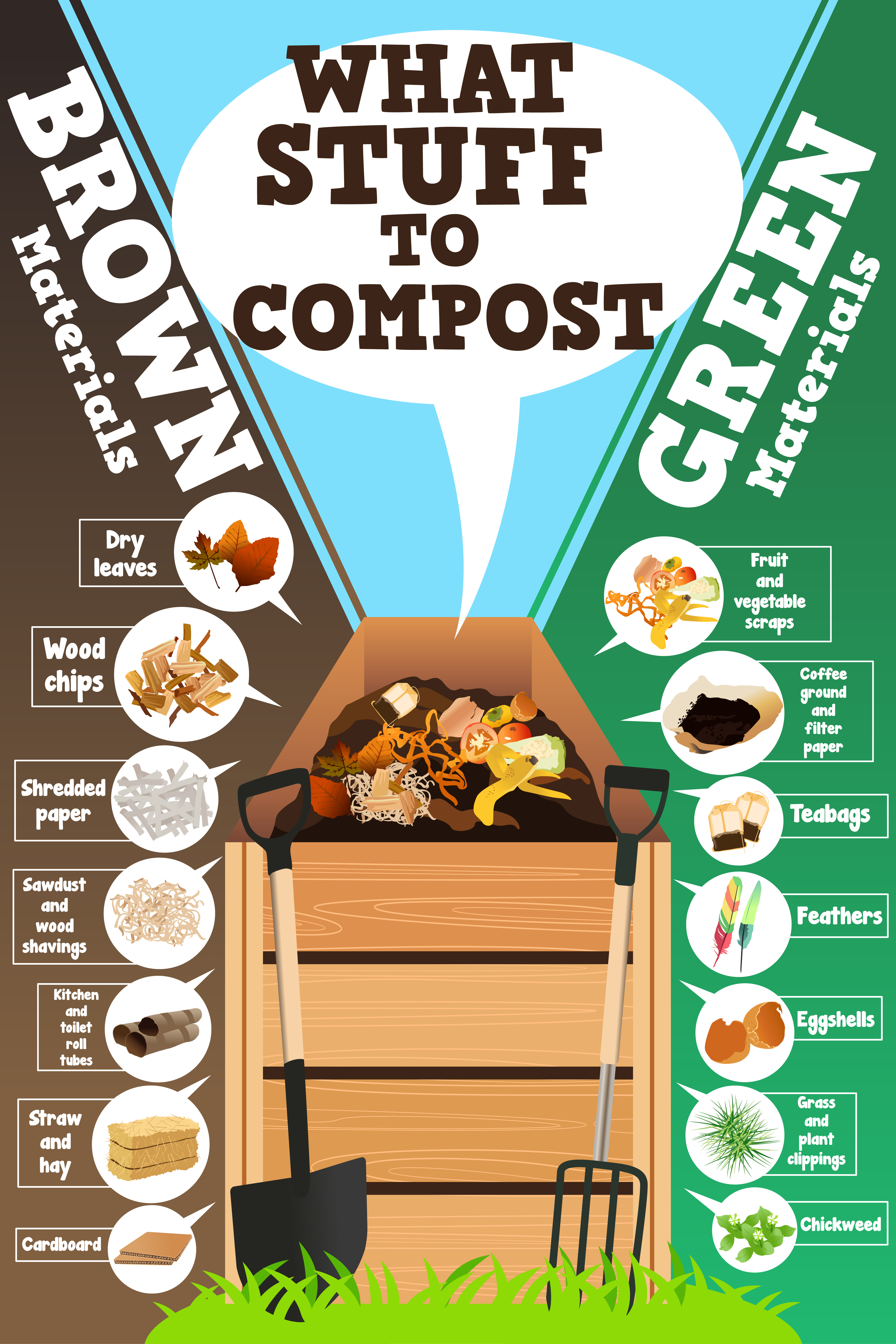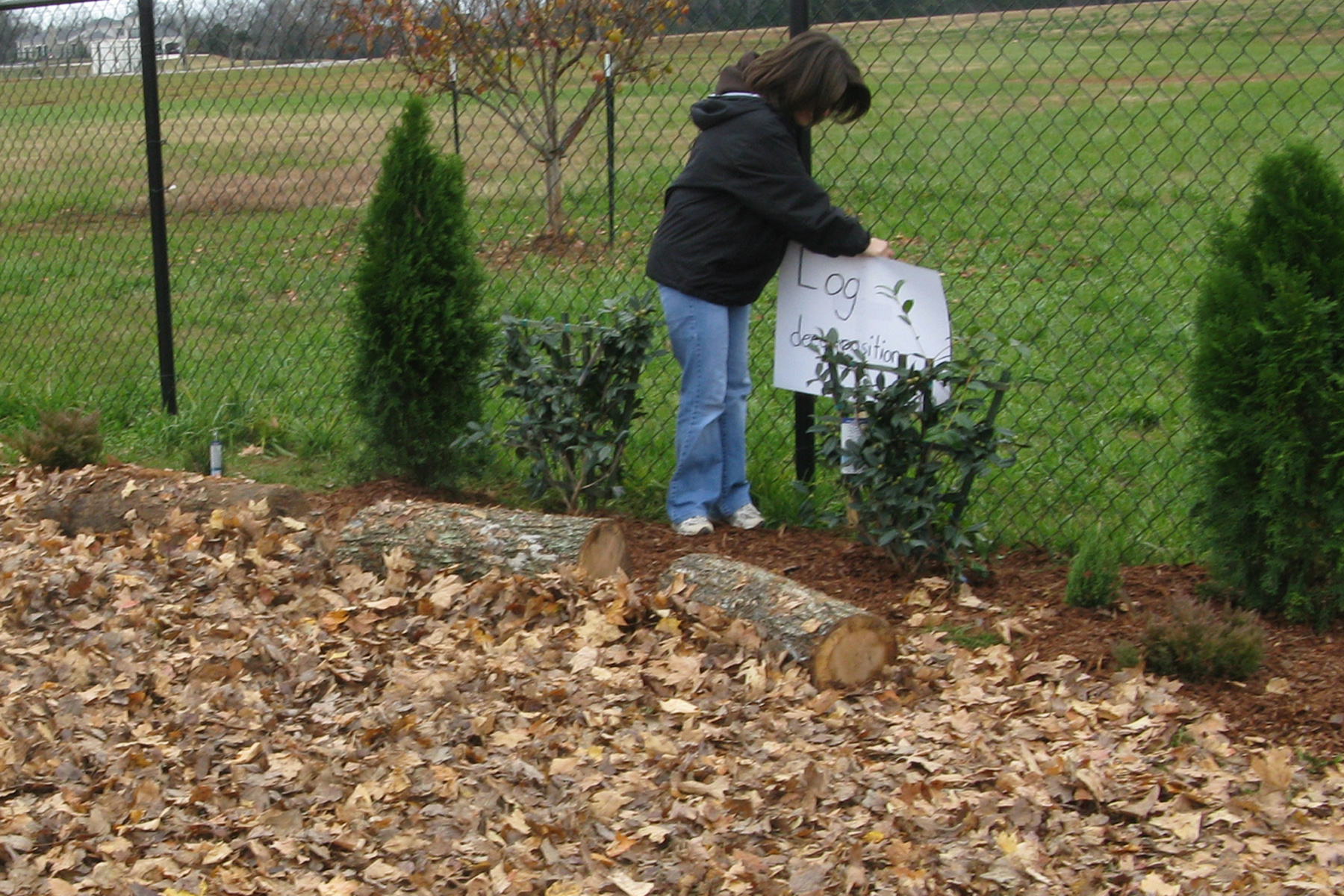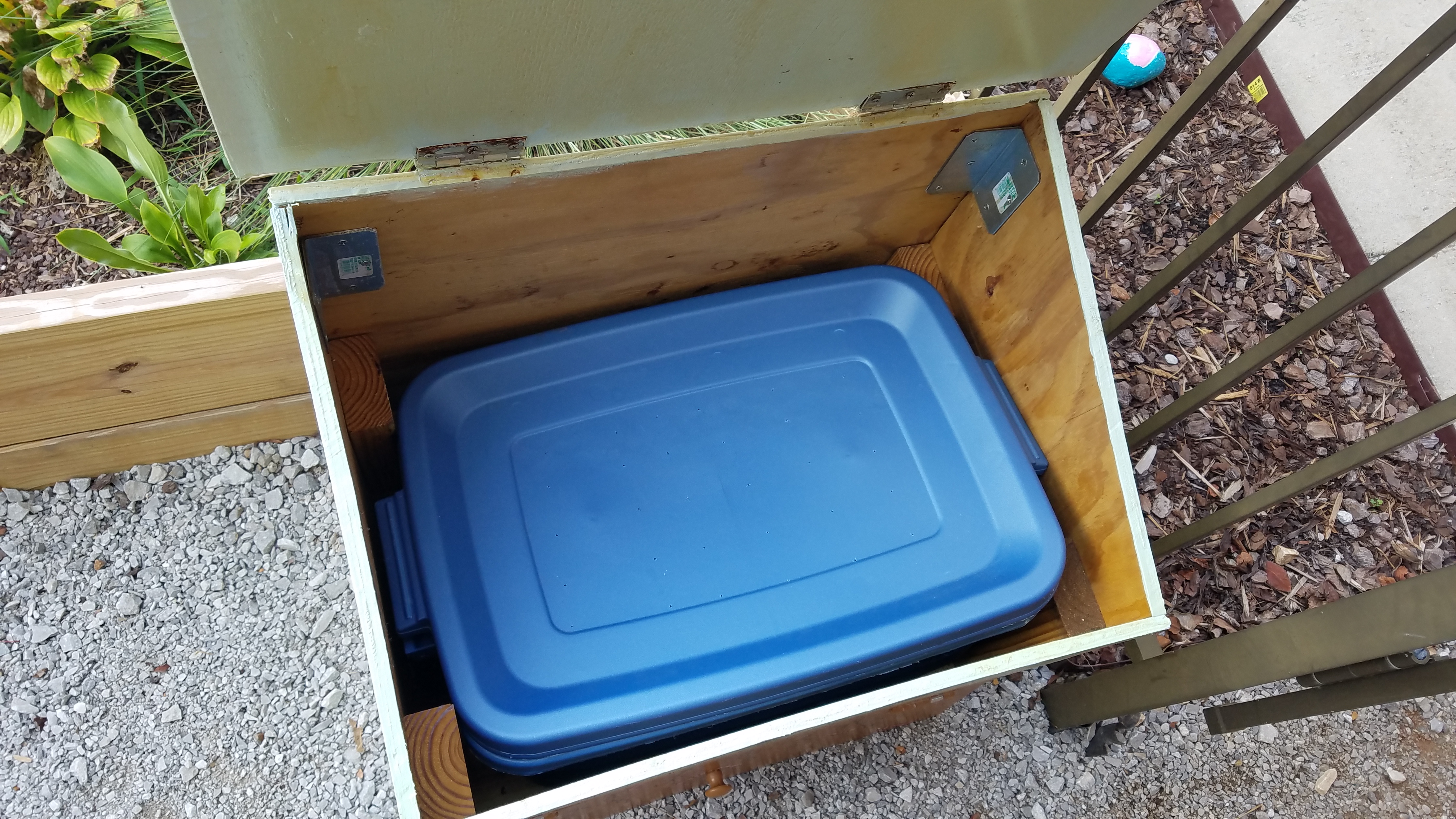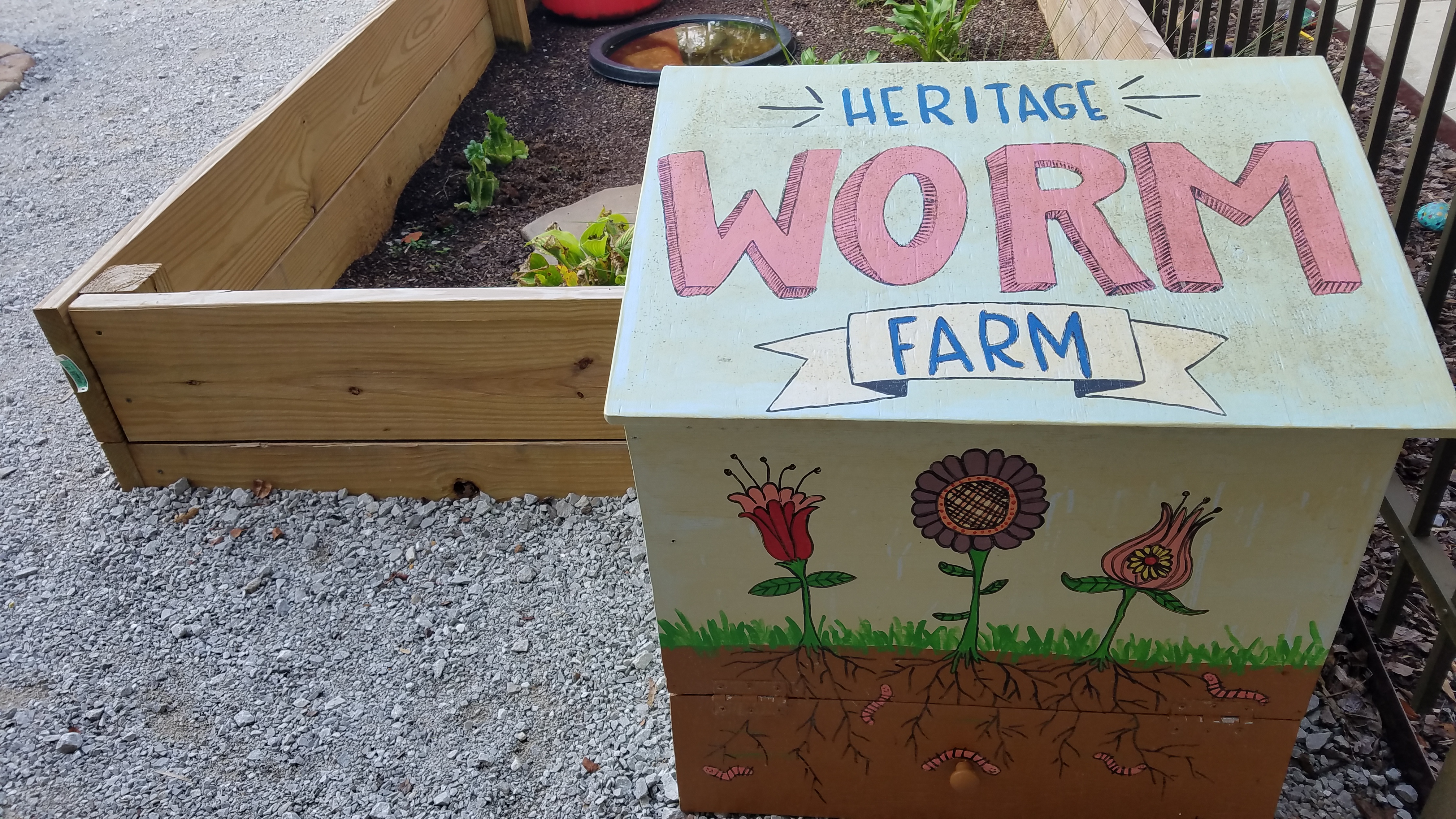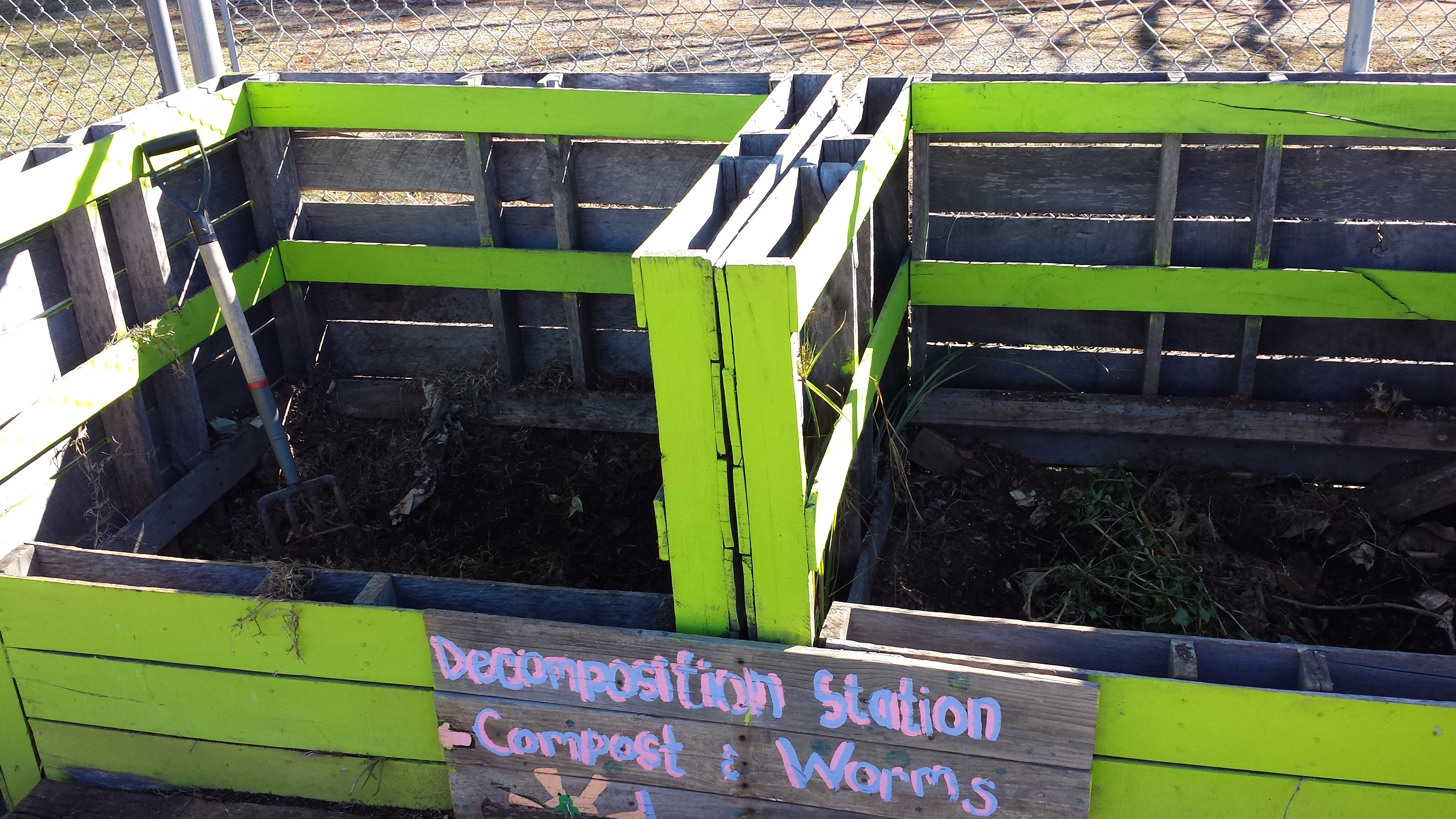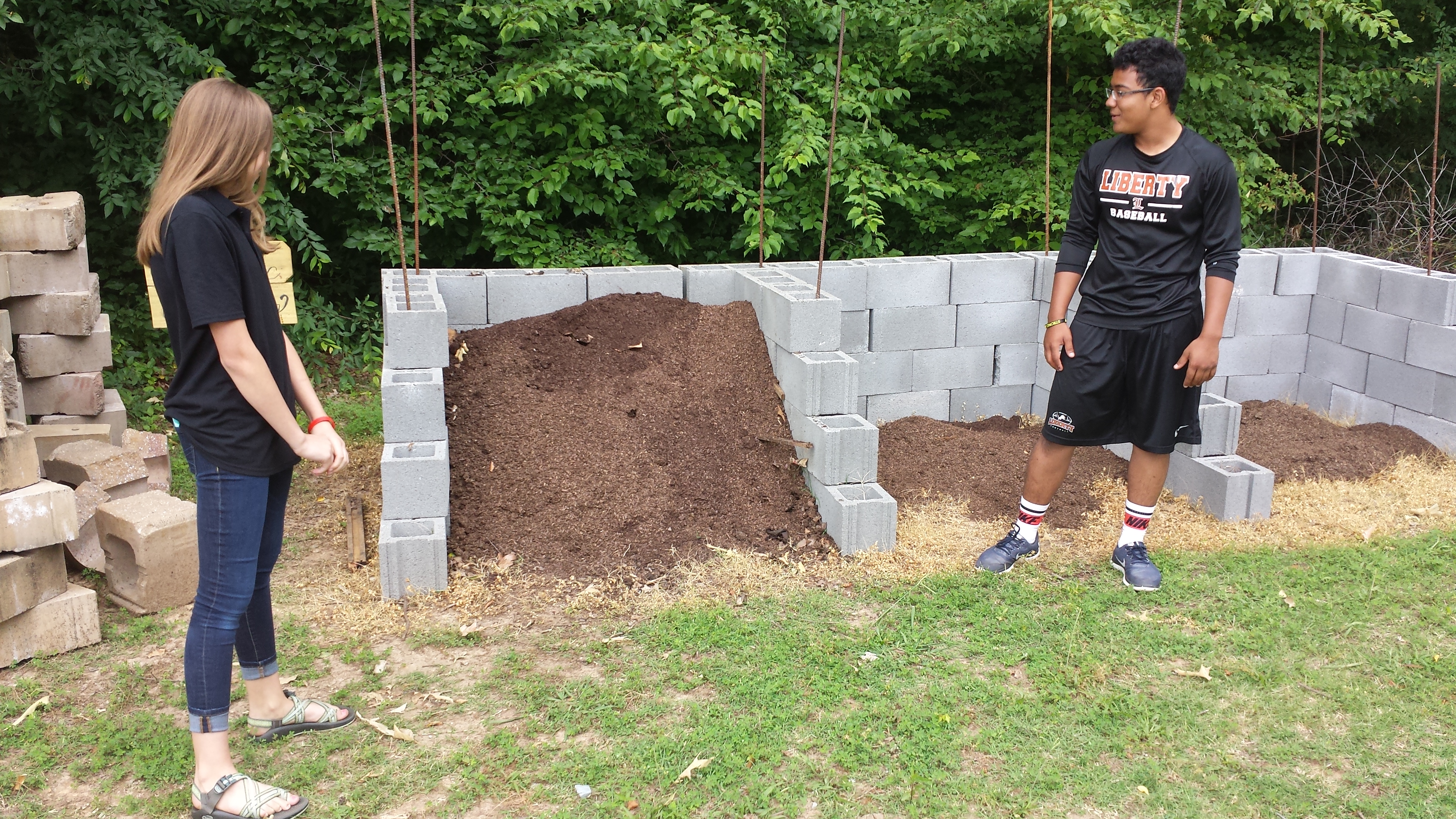Outdoor Learning Station: Decomposition Stations
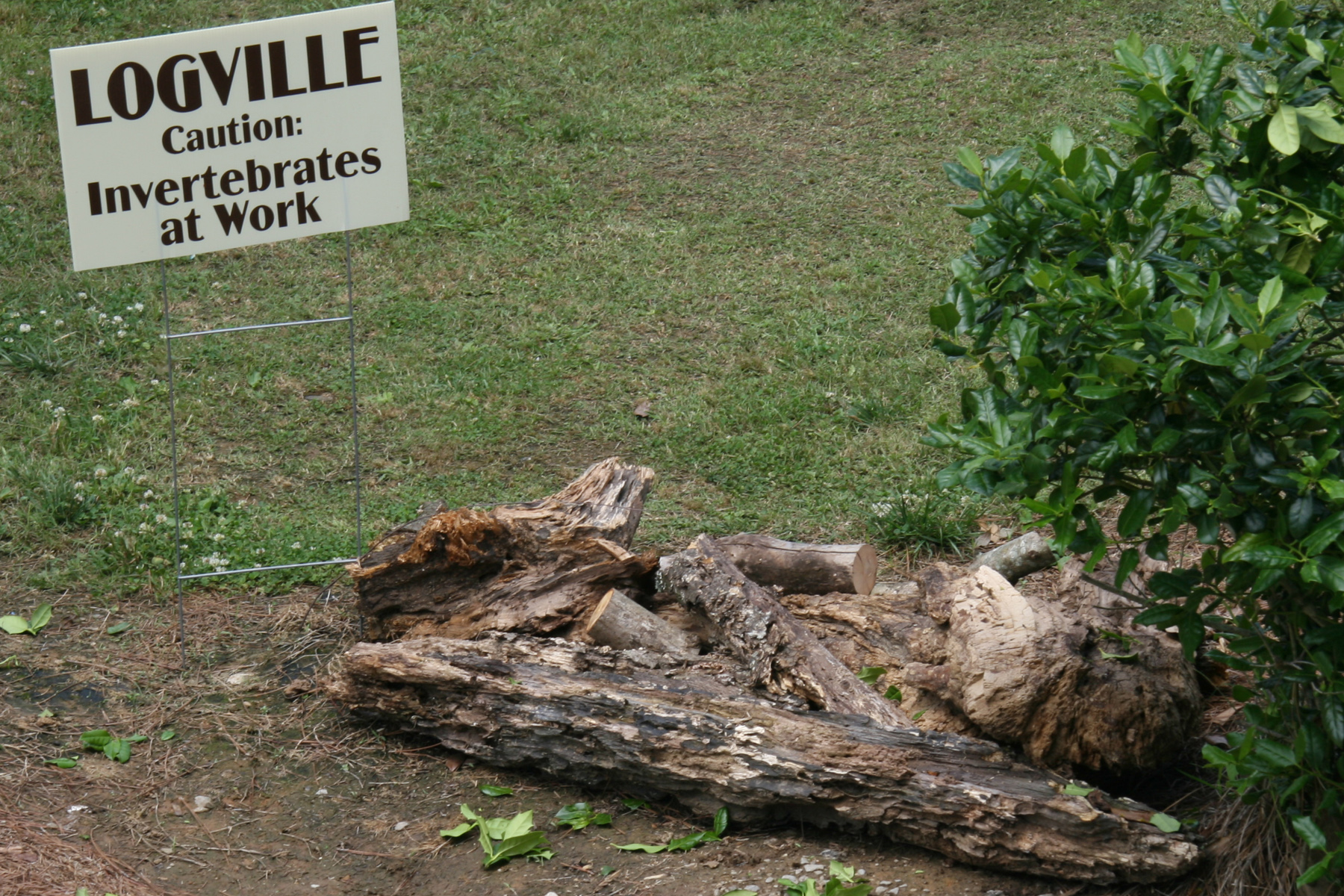 Decomposition stations in your outdoor classroom allow you and your students to observe decomposition over a long period of time and learn how various natural cycles such as the carbon and nitrogen cycles function in nature. By maintaining a rotting log learning station, compost bin/ pile, or vermicomposting bin, you and your students will learn about a vast array of decomposers (bacteria, fungi, arthropods and worms) as well as organisms that feed on the decomposers (salamanders, arthropods and worms).
Decomposition stations in your outdoor classroom allow you and your students to observe decomposition over a long period of time and learn how various natural cycles such as the carbon and nitrogen cycles function in nature. By maintaining a rotting log learning station, compost bin/ pile, or vermicomposting bin, you and your students will learn about a vast array of decomposers (bacteria, fungi, arthropods and worms) as well as organisms that feed on the decomposers (salamanders, arthropods and worms).If you and your students would like to learn more about the process of decomposition and the decomposers that help with decomposition, visit our Learning Station Investigation webpage:
Decomposers and Their Habitat.
Use the links below to create and use decomposition stations in your outdoor classroom:
Decomposition Stations | Materials Budget | Construction Instructions | Educational Sign & QR Code | Activity Resources | Maintenance Tips | Example Photos
Decomposition Stations
Log Decomposition Station
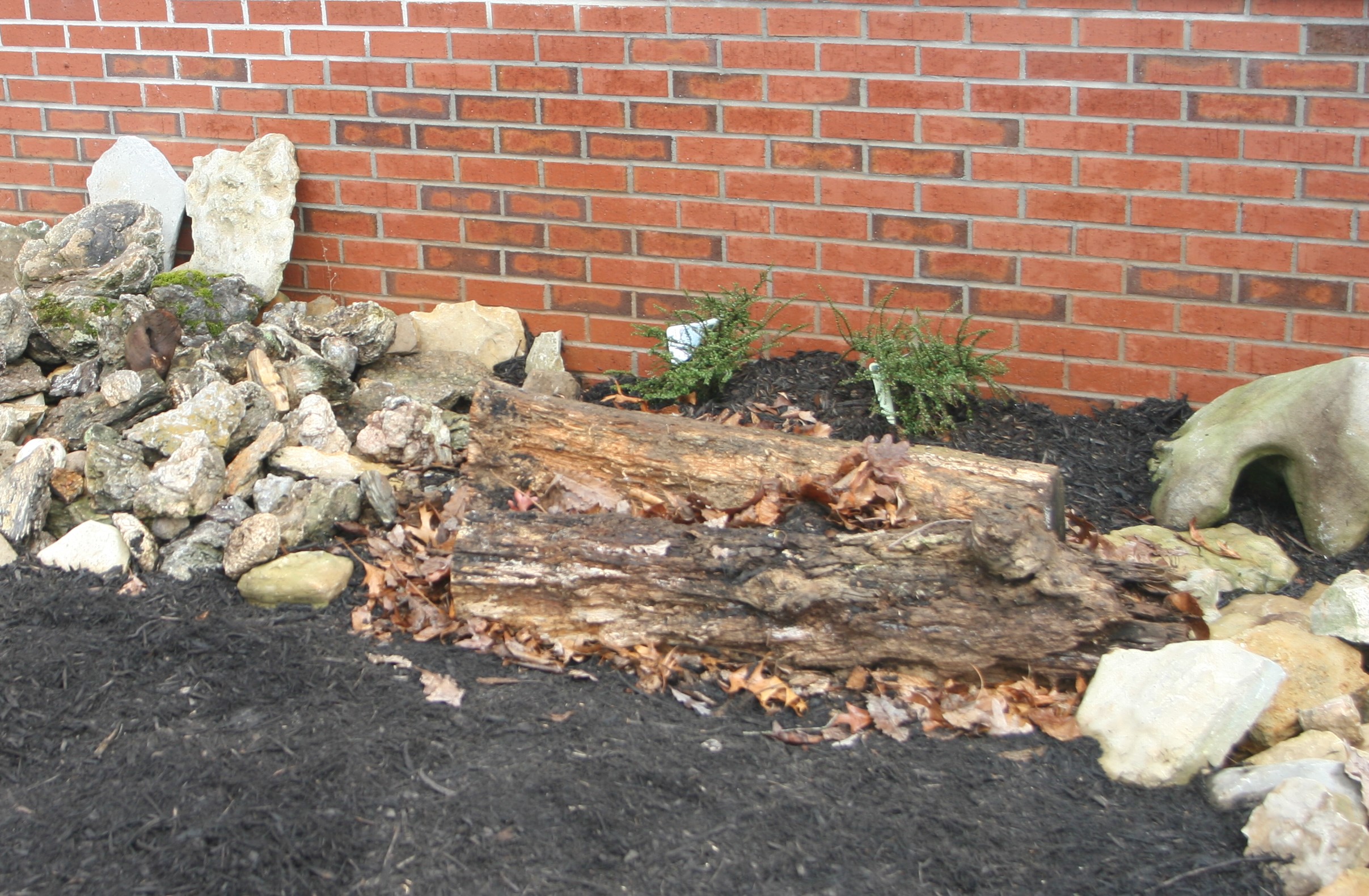 The rotting logs in a log decomposition station are a representation of what happens on a larger scale in real forests and even in your own yard. When a tree falls, it remains there as decomposers slowly consume it and return the nutrients to the soil. They do this by breaking down complex molecules in the log into simple carbon and nitrogen, as well as other minerals that living plants can use.
The rotting logs in a log decomposition station are a representation of what happens on a larger scale in real forests and even in your own yard. When a tree falls, it remains there as decomposers slowly consume it and return the nutrients to the soil. They do this by breaking down complex molecules in the log into simple carbon and nitrogen, as well as other minerals that living plants can use.A forest is considered a major habitat and the fallen log is considered a microhabitat – a smaller habitat within a major habitat. The log provides the food, water, shelter, and places to raise young for the animals living around and within it. Producers, consumers, and decomposers can all live in a fallen log.
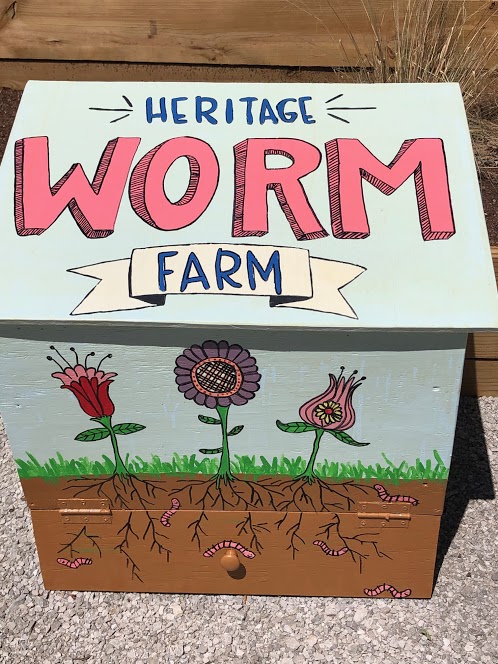
Vermicomposting
Vermicomposting is the method of using earthworms to speed up the process of composting. The worms in the compost bin or pile consume the compost material and turn them into something useful – worm castings (or worm poop). The worms and their castings can be spread into gardens to fertilize plants, help break-up the soil so that it can retain water, and help plants grow faster and bigger!
This system shows you how important worms are to the health of our ecosystem. Just as they do in your vermicompost bin, worms help break down organic matter into things in our ecosystem that plants can use. They create nutrient-filled soil with their castings and break up the soil with their tunnels so the soil can hold more water!
The Red Wiggler worms used in vermicomposting are not native species and should not be released into your gardens or into the natural ecosystem.
Compost Piles/ Bins
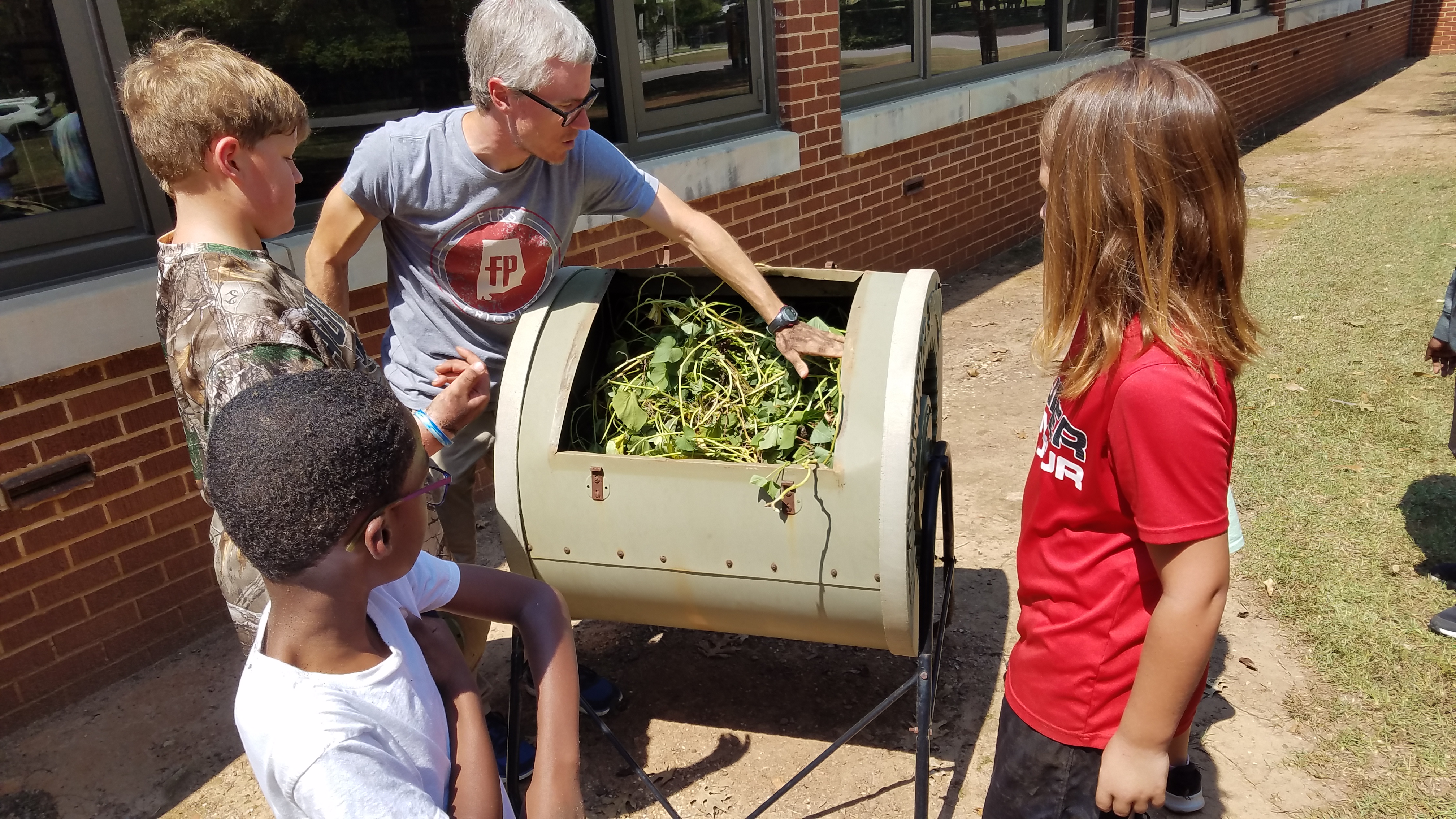
In a compost bin or pile, bacteria (decomposers) use oxygen and heat to break down organic material, such as leaves, sticks, grass clippings, and dead flowers. Finished compost is dark, spongy, and full of nutrients. It can be spread into gardens to fertilize plants, help break-up the soil so that it can retain water, and help plants grow faster and bigger!
Materials List & Estimated Budget
These example project plans for include the following:
- a suggested list of materials needed to construct the learning station,
- suggestions about where you can purchase the materials,
- an estimated budget,
- and space where you can track your donations and final costs for this learning station.
Log Decomposition Station (Word Doc | PDF)
Worm Bin/ Vermicompost (Word Doc | PDF)
Compost Pile/ Bin - Look online to get ideas and instructions for building your bin. There are many options available.
Construction Instructions
These construction instructions include a list of tools & supplies needed for your work day as well as step-by-step construction instructions.
Log Decomposition Station (Word Doc | PDF)
Worm Bin/ Vermicompost (Word Doc | PDF)
Compost Pile/ Bin - Look online to get ideas and instructions for building your bin. There are many options available.
Educational Sign & QR Code
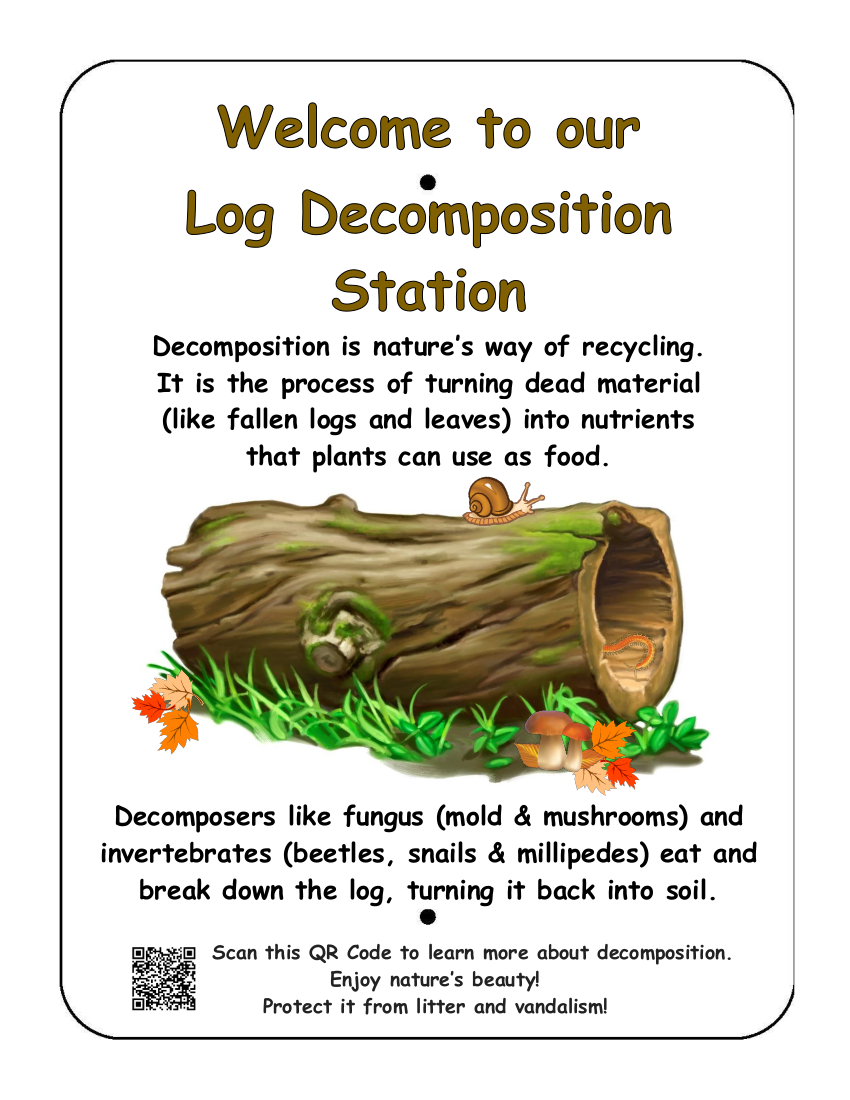
CLICK HERE to download the QR Code for this webpage.
You can inlcude the QR Code on the educational signs for your decomposition station in your outdoor classroom.
| Log Decomposition: PDF | Word Doc | Vermiculture Bin: PDF | Word Doc |
| Decomposition Station - Compost Pile: PDF | Word Doc | Simple Compost Pile: PDF | Word Doc |
| Decomposition Station - Compost Bin: PDF | Word Doc | Simple Compost Bin: PDF | Word Doc |
Maintenance Tips
Log Decomposition Station - If you have no rain for more than two weeks, be sure to give your logs and surrounding ground a good soaking with your hose to help keep the area moist for decomposers. Consider adding this task to your weekly maintenance checklist.
Vermicompost Bin - Sprinkle about a quart of water on it once a week, add new “food” every three or four weeks, and use a hand trowel to mix up the mixture of soil, sand & food once a month. You can also reference our Vermiculture Info (as a powerpoint) / Vermiculture Info (as a PDF). These include details about what to "feed" to the worms and how to maintain the worm bin farm. For info about what can and cannot be added to the bin, refer to chart on right.
Compost Pile/ Bin - Alternate adding green and brown materials. If you add too much of one of the other, moisture levels will be off and your compost will not break down properly. Materials should be as wet as a rung-out sponge. Keep bags of dry leaves (brown material) on-hand to add to the pile after you add food scraps or yard waste (green materials). When you add to the pile, be sure to mix in the fresh material with lower layers. Mix or turn the compost weekly to encourage decomposition and minimize odor. As the contents of the pile decompose, the pile will shrink. Finished compost will be dark, crumbly and smell like earth and will end up at the top of the bin or compost pile. Remove all the finished compost from the bin, leaving unfinished materials in the bin to continue decomposing. If you have a multi-chambered bin, keep your finished compost in a separate chamber than your working compost. For info about what can and cannot be added to the pile, refer to chart on right.
Read more about composting in AWF's "Backyard Composting - Making Black Gold" article.
Activity Resources
Student Exploration Links
Use these webpages with your students to learn more about decomposition and decomposers:
- Learning Station Investigation: Decomposers and Their Habitat
- Wonders of Wildlife: Little Black Ant
- Wonders of Wildlife: Millipede
- Wonders of Wildlife: Pillbug (roly poly)
- Wonders of Wildlife: Red Wiggler Worm
- Dig Into Plants: Similar Species (fungi/mushrooms & lichens)
Activities & Lesson Plans
Use these activities with your students to learn more about decomposers, decomposition, food chains, food webs, energy cycle, nitrogen cycle and carbon cycle:
AWF's Outdoor Classroom Field Investigation Activities
- Find a Food Chain (5th) : Online Interactive Lesson Plan

Activity Pages: (Version #1: Word Doc / PDF) (Version #2: Word Doc / PDF)
Students explore the outdoor classroom, recording plant/animal evidence of a food chain, and tracing the flow of energy through the food chain from the producer to the consumers. AL Science Standards #10 & #11: Construct and interpret models (e.g., diagrams, flow charts) to explain that energy in animals' food is used for body repair, growth, motion, and maintenance of body warmth and was once energy from the sun. & #11: Create a model to illustrate the transfer of matter among producers; consumers, including scavengers and decomposers; and the environment. - Create a Food Web (5th) : Online Interactive Lesson Plan
Activity Pages: (Version #1: Word Doc / PDF) (Version #2: Word Doc / PDF)
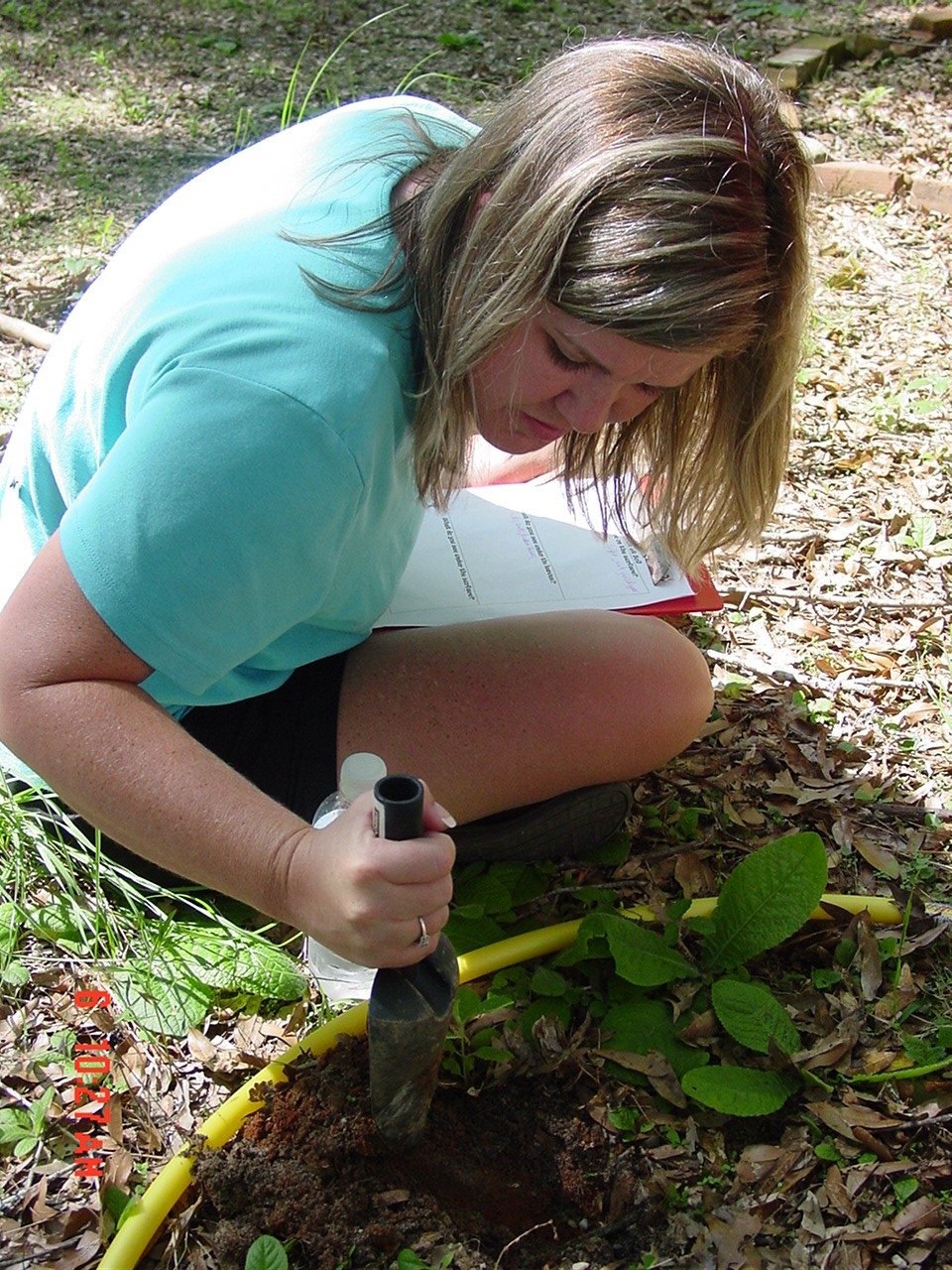 Students explore the outdoor classroom, recording plant/animal evidence of an “aquatic” food chain and “terrestrial” food chain that overlap in a food web. AL Science Standards #10 & #11: Construct and interpret models (e.g., diagrams, flow charts) to explain that energy in animals' food is used for body repair, growth, motion, and maintenance of body warmth and was once energy from the sun. & #11: Create a model to illustrate the transfer of matter among producers; consumers, including scavengers and decomposers; and the environment.
Students explore the outdoor classroom, recording plant/animal evidence of an “aquatic” food chain and “terrestrial” food chain that overlap in a food web. AL Science Standards #10 & #11: Construct and interpret models (e.g., diagrams, flow charts) to explain that energy in animals' food is used for body repair, growth, motion, and maintenance of body warmth and was once energy from the sun. & #11: Create a model to illustrate the transfer of matter among producers; consumers, including scavengers and decomposers; and the environment. - Evidence of the Nitrogen Cycle (6th): (Word Doc / PDF) - Students explore the outdoor classroom to find evidence of the nitrogen cycle and its processes such as fixation, assimilation, and ammonification.
- Evidence of the Carbon Cycle (6th): (Word Doc / PDF) - Students explore the outdoor classroom to find evidence of the carbon cycle in the biosphere, atmosphere, hydrosphere, and geosphere.
- Forest Floor Investigation (3rd - 7th): While exploring the forest floor, the students will learn about the various organisms that live in and under the leaf litter, including a variety of decomposers.
- Science Learning Hub - Learn How to Make a Mushroom Spore Print (webpage) and Making a Mushroom Spore Print Lesson Plan (PDF)
- Kids Gardening.org - Fungus Among Us Activity & Lesson Plan
Presentations & Videos
- Decomposition & Decomposers Background Info Presentation (from webinar): PDF
- AWF's Alabama Nature Center Live Naturalist Chat: Decomposer Hike (part 1) (28 min. FaceBook video)
- AWF's Alabama Nature Center Live Naturalist Chat: Decomposers (Part 2) (35 min. FaceBook video)
- Project Learning Tree's Fallen Logs (13 min. Vimeo video)
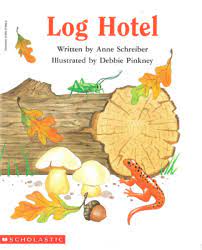
- SciShow Kids: Fungi: Why Mushrooms are Awesome (4 min. YouTube video)
- Earthworm Facts (as a powerpoint) / Earthworm Facts (as a PDF)
- Log Hotel by Anne Schreiber
- FREE Fungi Field Guide (PDF) from USDA
- How Wood Beetles are Nature's Recylers - with a Little Help from Fungi by Michal Filipiak
Example Photos
|
Falkville Elementary's Log Decomposition Station
|
Legacy Elementary's Log Decomposition Station
|
|
Heritage Elementary's Vermiculture Bin
|
Heritage Elementary's Vermiculture Bin
|
|
Leon Sheffield Elementary's Compost Station
|
Example Compost Station
|
Questions: Contact the AWF at aprilwaltz@alabamawildlife.org.
.
 Wildlife Tag
Wildlife Tag
